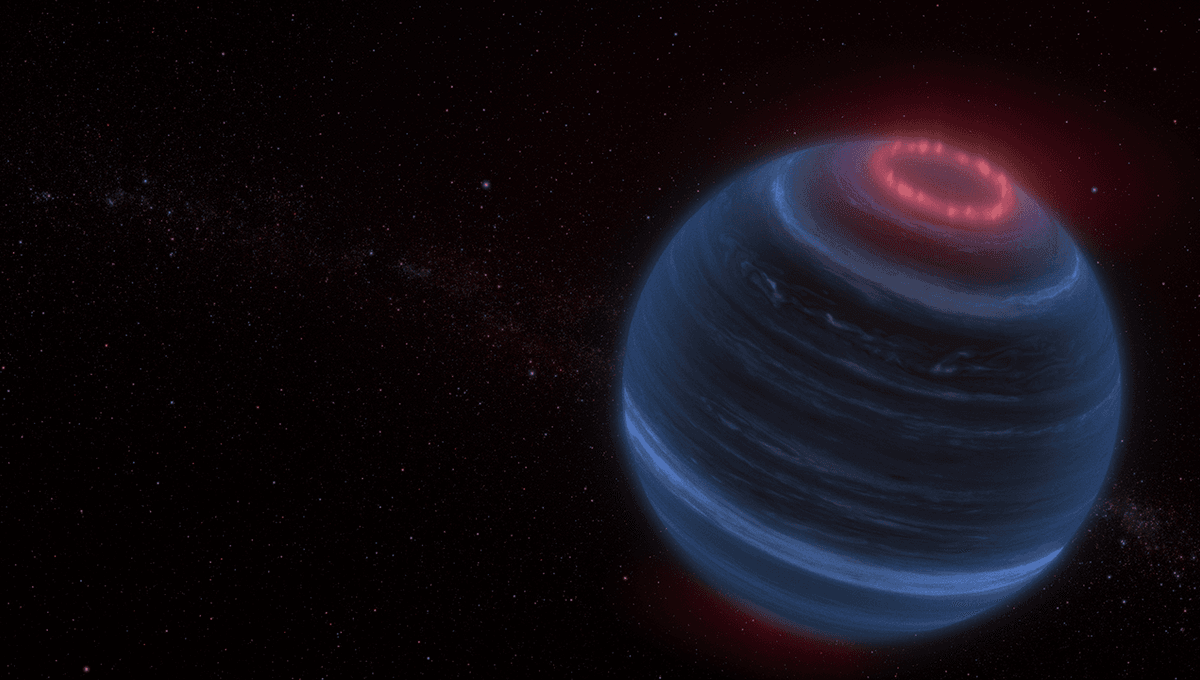
Brown dwarfs are very peculiar celestial objects. They form like stars, but they are not massive enough to start nuclear fusion in their core, so they don’t quite make it as stars. Some of them are the size of planets, with clouds and turbulent atmospheres, although they are not really planet-like. Some of them have aurorae, like the Northern Lights we see on Earth. However, it’s not exactly clear how.
Brown dwarf W1935 is exactly that kind of object. Astronomers observed it with JWST and expected to see methane in its atmosphere, which is very common in brown dwarfs. Practically, infrared light has a big dip at a specific wavelength, the signature of methane presence as methane absorbs that light. But the team did not see absorption – they saw emission. Something is making methane glow.
“We expected to see methane because methane is all over these brown dwarfs. But instead of absorbing light, we saw just the opposite: The methane was glowing. My first thought was, what the heck? Why is methane emission coming out of this object?” lead researcher Jackie Faherty, an astronomer at the American Museum of Natural History in New York, said in a statement.
Emitting methane has been seen on Jupiter and Saturn, and this is associated with auroral activity. The giant planets have aurorae from interactions between their strong magnetic fields and the solar wind, as well as material released by some of their active moons: volcanic Io for Jupiter. and the geyser of Enceladus for Saturn. But W1935 is isolated. There’s no stellar wind flowing onto it that would cause the aurora. and a moon has not been seen.
“With W1935, we now have a spectacular extension of a solar system phenomenon without any stellar irradiation to help in the explanation,” added Faherty.
The lack of stellar irradiation is also puzzling for another reason. The best model suggests that the brown dwarf’s atmosphere is getting hotter with altitude, a bit like Earth’s stratosphere. Stratospheres have been witnessed on exoplanets but always in conjunction with the light and heat from the star. Once again, it’s unclear what is going on here.
“This temperature inversion is really puzzling,” added Ben Burningham, a co-author from the University of Hertfordshire in England and lead modeler on the work. “We have seen this kind of phenomenon in planets with a nearby star that can heat the stratosphere, but seeing it in an object with no obvious external heat source is wild.”
Despite being a few hundred degrees hotter than Jupiter, this is the coldest brown dwarf to be a candidate for auroral activity. A previous brown dwarf with aurorae was a lot hotter. More observations of these objects will certainly come in time to understand what is going on.
Research discussing the discovery was presented at the 243rd meeting of the American Astronomical Society.
Source Link: Failed Star Is The Coldest Object To Potentially Show Aurorae Beyond Our Solar System